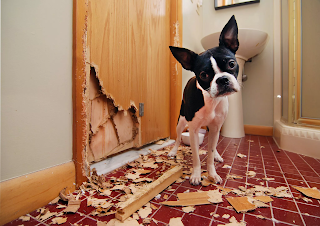How To Treat Separation Anxiety in Dogs?
How To Treat Separation Anxiety in Dogs?
Separation anxiety is a common behavioral problem in dogs, but there are several strategies you can use to help manage and treat it. Here are some tips on how to treat separation anxiety in dogs:
Gradual desensitization: Gradual desensitization involves slowly getting your dog used to being alone for long periods of time. Start by leaving your dog alone for short periods, and gradually increase the time you are away. This helps your dog learn that being alone is not something to be afraid of.
Counter-conditioning: Counter-conditioning involves pairing something positive, like treats or toys, with being alone. This helps your dog associate being alone with positive experiences, rather than fear and anxiety.
Provide plenty of exercise and mental stimulation: Exercise and mental stimulation can help reduce anxiety in dogs. Make sure your dog is getting plenty of exercise, and provide them with toys and puzzles that keep their minds engaged.
Create a safe space: Create a safe space for your dog, like a crate or a designated area in your home. This provides a place where your dog feels secure and can go to when they feel anxious.
Consider medication: In some cases, medication may be necessary to treat severe separation anxiety. Talk to your veterinarian about whether medication is appropriate for your dog.
Seek the help of a professional: If your dog's separation anxiety is severe, it may be helpful to seek the help of a professional dog trainer or behaviorist. They can work with you and your dog to develop a comprehensive treatment plan that addresses your dog's specific needs.
Remember, treating separation anxiety takes time and patience. It's important to be consistent with your training and to provide your dog with a safe, secure environment where they feel comfortable and relaxed. With the right treatment, most dogs can overcome separation anxiety and learn to be comfortable when left alone.

Comments
Post a Comment